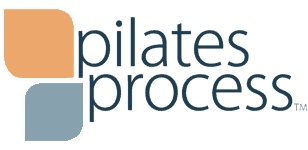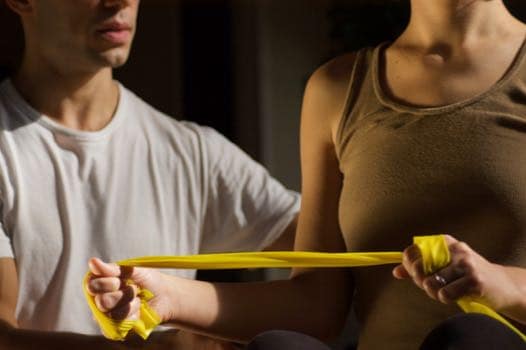Why the common cue for slumped posture and forward shoulders may be hindering your recovery.
I like finessed messages. Core stability, biomechanics, posture and alignment are all complex and nuanced subjects, but sometimes when there is too much nuance we lose the key message. So here is the non finessed message, loud and clear.
Stop pulling your shoulders down!
It’s a blunt cue that adds unnecessary and problematic tension and imbalance to the shoulders, neck and low back.
At Pilates Process™ we often preach efficiency. It’s one of our fundamental Principles of Movement and it’s not just a style preference We like the balanced strength and healthier joints that come with fluid movement and subtle, layered, stability.

Classic rotator cuff exercises aim to strengthen the local stabilizing muscles that guide and centre the shoulder joint. These exercises are designed to isolate, so they are performed with the shoulder girdle and ribcage in a “good” postural position.
What is a good postural position?
Let’s start with the ribcage. In “ideal posture” the ribcage is balanced on the pelvis (as opposed to shifted forward or back). In the photos below the centre photo (B) is the goal. When correcting a slumped postural position we often overshoot and move towards the excessive back gripping shown in the 3rd photo (C). This is especially true when paired with pulling the shoulders “back and down”.

A. B. C.
The other detail of note here is the position of the shoulder joint.
Our shoulders are designed to angle slightly forward of the body (B).
Where does Back and Down come from?
The Trapezius Muscles are the big diamond shaped muscles on the back. The lower portion of these (Lower Fibres of the Trapezius) muscles are loved by all because they are important stabilizing muscles that anchor and guide the scapula on the back and direct the shoulder joint drawing the shoulders back and downwards. An activation cue for these muscles is cue is to draw your shoulder blades into your opposite back pocket.
What is said vs what we do.
The cue to draw the shoulders back and down is intended to to activate these lower trap muscles and stabilize the shoulder blades before a targeted movement – an antidote to shoulders that are too hunched up. The problem is that the point is to lightly awaken a set of muscles but we are not usually subtle enough. We tend to brace downwards gripping through the armpit and ribs, tensioning the neck and low back and ignoring the balance of muscles that are involved in stabilizing.
What to do?
A few things.
- We love to add a spacer between the elbow and body when doing isolated exercises. A ball works super well. The cue to “not squish the ball”, “support the ball upward”, “float the shoulders and collarbones on the ribcage” can trigger more complex stability.
- Light to heavy. Try starting with a very low load for 10 reps. How little effort does it take to maintain alignment? Then add more load. Notice the effort to stabilize increase. Try not to increase it more than is required to maintain your position.
- Progressions. Take the ball away and see if you can maintain the image without the prop. Combine more complex patterns (as in the 2nd video exercise).
Summary
Finding softer, more complex stability can take more focus than a nice simple directive like shoulders down. I think it’s why these big cues stubbornly stick around, and certainly some people have had a good response to them. But for many more people the response takes them from ok alignment to terrible alignment.
So if you’ve struggled to find any progress in resolving your rotator cuff issues, neck strain or low back gripping, try playing attention to your form. Letting go of the anchoring feeling might well give you greater stability and a stepping stone to healthier movement.
This short video gives a visual of an exaggerated response to a shoulders down cue and a healthier reset.
Laura Helsel Gauthier
Director
Pilates Process™
Writer – Presenter – Teacher
Franklin Method® Educator
laura@pilatesprocess.ca

